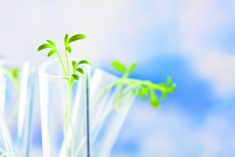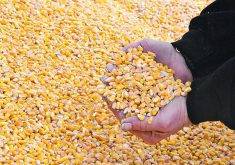At what point do regulatory experts possess sufficient knowledge on innovative technologies and their potential impacts, both beneficial and adverse, that they decide regulation is no longer required?
Ideally, we would be able to have products seamlessly enter the market that required no regulatory oversight.
The reality of this is unlikely because one role of government is to ensure the safe provision of food to its citizens.
Experts in risk assessment for the approval of new crops and foods are an important component of food safety systems because they use science-based evidence to assess the potential risks of new food products.
Read Also

Kochia has become a significant problem for Prairie farmers
As you travel through southern Saskatchewan and Alberta, particularly in areas challenged by dry growing conditions, the magnitude of the kochia problem is easy to see.
In Canada, if the risk of new products are similar to the risks of existing food products, the new product will be approved. This is a science-based process known as substantial equivalence.
A subsequent and pertinent question is at what point is the change so tiny that the resulting product is, for all purposes, identical to previous ones?
The advancements of genome editing technologies are capable of removing one gene or changing it to express at higher, or lower, levels. In plants that have hundreds of thousands of genes, changing one gene is less than the number of genes that naturally mutate from one generation to the next.
For instance, in wheat, there are only 21 chromosomes, but there are hundreds of thousands genes. When we look at natural rates of mutation in multicellular organisms, they range from one in 100,000 to one in one million genes.
The wheat genome ranges from 164,000 to 334,000 genes, which means that two or three genes will naturally mutate from one generation to the next, giving the plant slightly different trait characteristics. So what’s the difference between three natural, random mutations and one genome edited targeted mutation?
It is impossible to regulate natural, random rates of genetic mutation. Those that are beneficial mutations will be passed along to future generations and can even be increased over time, such as how plants developed natural resistance to specific insect pests.
Natural and random genomic mutations happen in all plant species from one generation to the next, all of which are completely unregulated with no risk assessments conducted. This fact raises the question of whether controlled mutation of a small number of genes through targeted mutagenic technologies, such as CRISPR-Cas9, require risk assessments and costly regulatory compliance.
Plants have amazing abilities to adapt to changing environments, such as improved drought resistance, seed production and insect resistance. Genome editing technologies have the precision to simply speed up what nature has been doing for millennia.
Risk assessment is designed to ensure that transformative changes in products don’t provide a greater level of risk to humans or the environment than existing products. Slightly changing two to three genes out of several hundred thousand isn’t a transformative change.
Several countries, such as the United States, Brazil and Argentina, have said that if genome editing technologies create a new plant variety that could have naturally occurred, additional regulatory oversight isn’t required.
Some countries, such as those within the European Union, allow fear and uncertainty about all genomic technologies to drive their regulatory risk assessments. This has driven billions of dollars in research and development investments out of the EU, reducing the area’s ability to ensure crop yields are sustained as the climate changes.
Is society prepared to stand by and watch the rates of food insecurity soar among the global population while technologies that could reduce this languish in scientifically unjustified regulation?
Stuart Smyth is an associate professor in the University of Saskatchewan’s Department of Agricultural and Resource Economics and is the Agri-Food Innovation and Sustainability Enhancement Chair. This article first appeared on the SaiFood website. It has been edited for length.

















